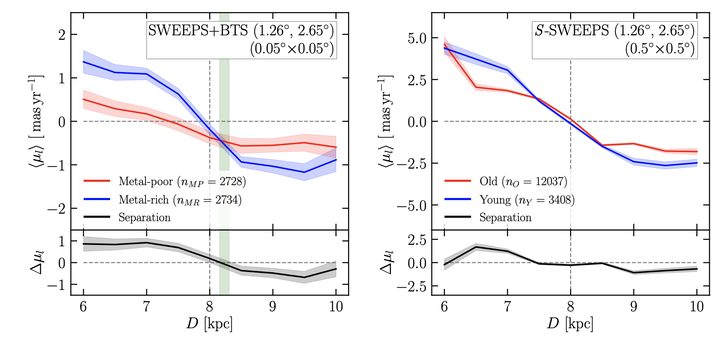Predicted Trends in Milky Way Bulge Proper Motion Rotation Curves: Future Prospects for HST and LSST

Abstract
We use an 𝑁-body+smoothed particle hydrodynamics simulation of an isolated barred galaxy to study the age dependence of bulge longitudinal proper motion (𝜇𝑙) rotation curves. We show that close to the minor axis (|𝑙| ∼ 0◦) the relatively young stars rotate more rapidly than the old stars, as found by Hubble Space Telescope in the Milky Way’s bulge. This behaviour would be expected also if the Milky Way were unbarred. At larger |𝑙| a different behaviour emerges. Because younger stars trace a strong bar, their Galactocentric radial motions dominate their 𝜇𝑙 at |𝑙| ∼ 6◦, leading to a reversal in the sign of ⟨𝜇𝑙⟩. This results in a rotation curve with forbidden velocities (negative ⟨𝜇𝑙⟩ at positive longitudes, and positive ⟨𝜇𝑙⟩ at negative longitudes). The old stars, instead, trace a much weaker bar and thus their kinematics are more axisymmetric, resulting in no forbidden velocities. We develop metrics of the difference in the ⟨𝜇𝑙⟩ rotation curves of young and old stars, and forbidden velocities. We use these to predict the locations where rotation curve reversals can be observed by HST and the Vera Rubin Telescope. Such measurements would represent support for the amplitude of the bar being a continuous function of age, as predicted by kinematic fractionation, in which the bar strength variations are produced purely by differences in the random motions of stellar populations at bar formation.